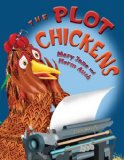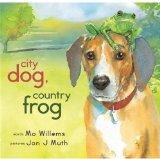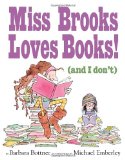Top Ten Tuesday: Books for Beginning Readers
Happy Top Ten Tuesday! Today I’m going to list ten books I recommend for children just learning to read on their own. I had to stretch a little with this list, since I didn’t want to include two books by the same author, and the truth is that with my sons, I went heavy on books by the same authors. Lots of books by the authors mentioned here, not just one. So I’d love to hear from you in the comments. Which books have I forgotten?
The titles I’ve reviewed will link to the review, and the others will link to Amazon. Next week, I doubt I will get a list posted, because my divorce case is scheduled to go to court Monday and Tuesday. But the week after that, I’ll post my top ten list of beginning chapter books. Be thinking of your favorites!
Sondy’s Selections, Books for Beginning Readers
Are You Ready to Play Outside? by Mo Willems
Gerald the elephant and his friend Piggie are all ready to play outside when it begins to pour down rain. How can anyone be happy playing when it’s raining?
George and Martha, by James Marshall
There never were such good friends as the hippos George and Martha. The stories in this book are short and easy to read, but all pack a punch.
Little Bear, by Elsa Homelund Minarik, illustrated by Maurice Sendak
Little Bear’s adventures with Mother, Father, his friends, and his grandparents all reflect a child’s life.
Bink and Gollie, by Kate DiCamillo and Alison McGhee, illustrated by Tony Fucile
This delightful new book tells about a pair of friends who are very different, but know how to compromise.
Bread and Jam for Frances, by Russell Hoban, illustrated by Lillian Hoban
Frances doesn’t want to eat a squishy soft-boiled egg. She wants only bread and jam. When Mother decides to indulge Frances’ whims, she begins to see the appeal of variety.
Days with Frog and Toad, by Arnold Lobel
This classic set of stories about two good friends shows Frog and Toad flying a kite, telling ghost stories, cleaning house, and even being alone. These simple stories will bring a smile.
Danny and the Dinosaur, by Syd Hoff
This book takes an imaginative look at what might happen if a dinosaur came to play. (He wouldn’t be very good at hide-and-seek.)
The Cat in the Hat, by Dr. Seuss
When the Cat in the Hat comes to play, nothing is ever boring, not even reading a book with a limited, easy-to-read vocabulary.
Are You My Mother?, by P. D. Eastman
The classic tale of a baby bird looking for his mother, but finding a Snort.
Nate the Great, by Marjorie Weinman Sharmat, illustrated by Marc Simont
This is the first of a series of easy-to-read mysteries featuring Nate, the pancake-loving boy detective.




